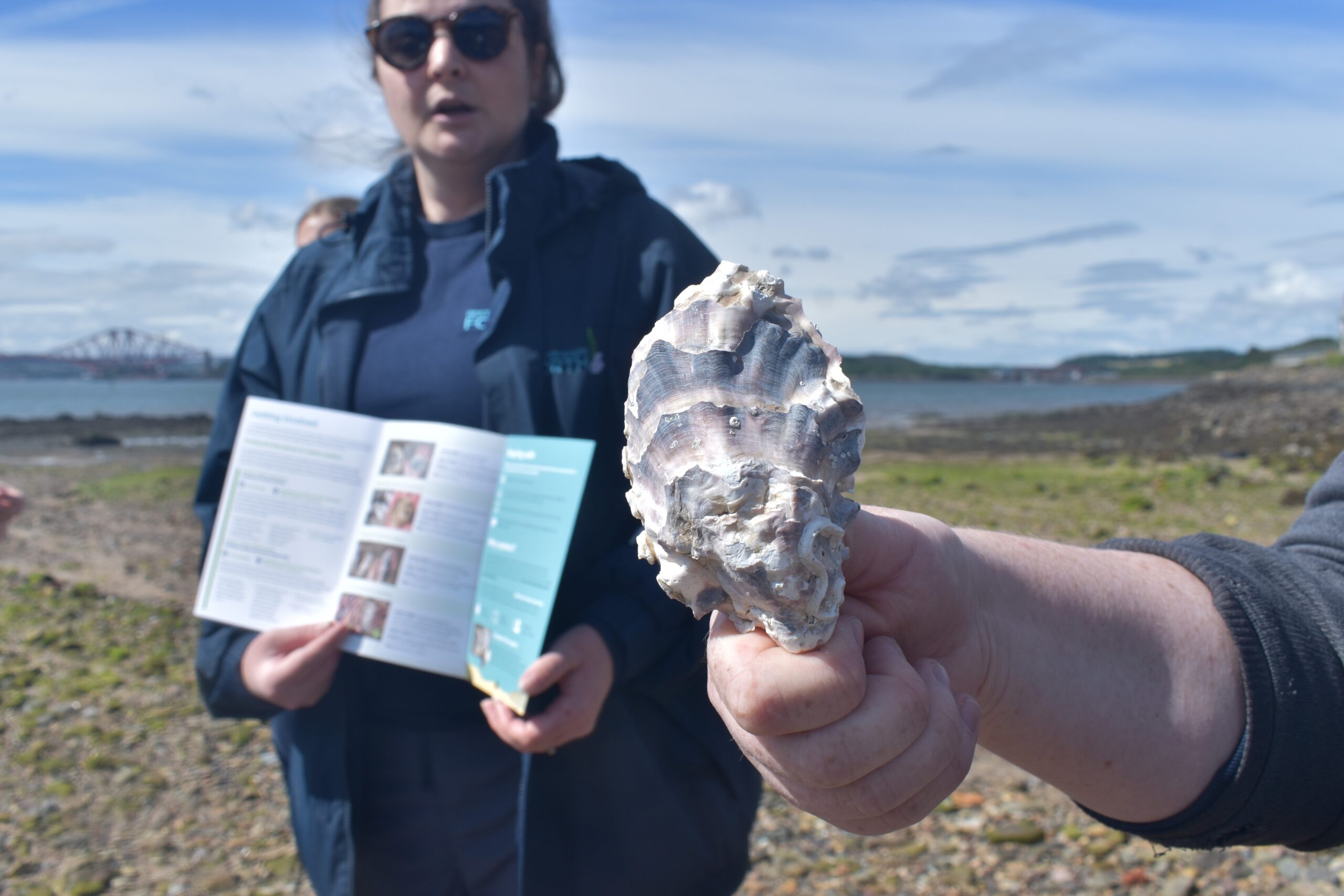- experience
- engage
- enjoy
First Native Oysters Returned to the Firth of Forth for over 100 years!
Publish Date: Friday December 22, 2023

Enjoy this end of year update from Restoration Forth. The project’s aim is to restore seagrass meadows and native oysters into the Firth of Forth, to create a healthier coastline for people and nature.
Fife Coast and Countryside Trust are a community hub for this project. If you’ve been getting involved, thank you for your time and enthusiasm!
In September the first batch of native oysters were released into the Firth of Forth by the Restoration Forth team and community members. Native oysters have been locally extinct in the area for over 100 years, so it was a hugely significant and exciting occasion! The moment was captured by BBC Landward, catch up on iPlayer. The Marine Conservation Society also released a blog to mark the occasion.
The team have developed the Oyster Observer Guide, a citizen science survey to collect data on the shell species that are washed up along the shoreline of the Firth of Forth.

Autumn seed processing
This Autumn the seagrass team have been in full swing with seagrass seed processing activities. This process involves separating our seagrass seeds from the rest of the plant material that we have brought back from Orkney. This allows us to store and hibernate our seeds over the winter so that we may germinate them in spring.
Seagrass processing occurred on both shores of the Forth this year, as we joined forces with the Firth of Forth Lobster Hatchery in North Berwick to increase our seed processing capacity. The Seabird Centre and the Ecology Centre have run a series of seed sorting and seed processing events for our community volunteers and interested groups. A huge thank you to everyone involved in this massive community endeavour.
Following our community sessions, and once the processing tanks were emptied, a thick mat of seagrass detritus and seeds was left to sort. To extract all viable seeds from the material, we were loaned a seed sorting device from project partners Project Seagrass. This allowed a final processing of those last precious seeds.
First results from our seagrass trials
For the very first time on the east coast of Scotland, we planted seagrass seeds at three sites around the Firth of Forth in March using a novel injection method. Seeds were collected from donor meadows in Orkney the year prior with the support of local communities.
Throughout this year, we have been monitoring germination success and the growth of our little seedlings. Initial analyses seem to point towards highly variable results which reflect differences in environmental parameters at each of the sites. We were happy to observe successful germination at all of our three sites, and up to 10% seedling survival.
In the context of restoration science, this is an encouraging result as wild seeds typically have less than 0.1% chance of germinating through natural processes.

